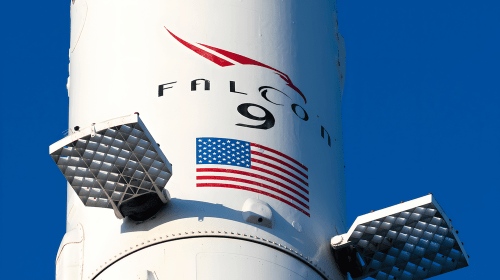Get Ready for MicroGEO: Astranis Set to Shake Up Industry
Sep 10, 2023
Astranis, a pioneering San Francisco startup, is set to disrupt the satellite internet industry with the launch of four new small broadband satellites by year’s end. The upcoming Falcon 9 mission includes satellites for Peru, in-flight connectivity, and most notably – MicroGEO UtilitySat.
UtilitySat represents a major leap forward as the world’s first multi-mission commercial GEO satellite capable of performing several simultaneous connectivity missions. Its flexible design and capabilities aim to greatly expand access to dedicated satellite broadband globally.
 According to Astranis CEO John Gedmark, “UtilitySat is the Swiss Army Knife of satellites.” Credit: Astranis
According to Astranis CEO John Gedmark, “UtilitySat is the Swiss Army Knife of satellites.” Credit: Astranis
So what makes UtilitySat so groundbreaking? Firstly, it provides unparalleled flexibility in frequency bands and beam coverage. UtilitySat can provide high-throughput connectivity on standard Ku-, Ka-, and Q/V-bands and can fine-tune exact frequencies using Astranis’ proprietary, ultra-wideband software-defined radio technology (SDR). This software-driven approach allows the satellite to adapt its coverage and capacity on the fly based on customer needs.
UtilitySat also features an incredibly agile design. It is equipped with a unique dual-propulsion system including both an electric ion thruster and chemical monopropellant thrusters. This empowers UtilitySat to relocate and reposition itself dozens of times throughout its lifetime while in geosynchronous orbit. By leveraging dual ion and chemical propulsion, the satellite can conduct both fine-tuned station-keeping and rapid orbit-raising maneuvers.
According to Astranis CEO John Gedmark, “UtilitySat is the Swiss Army Knife of satellites.” For example, UtilitySat could provide broadband to Alaska for one month, then relocate to serve the Middle East the next.
Astranis has introduced several other innovations to maximize capabilities while minimizing size, weight, and cost. The use of commercial off-the-shelf components rather than expensive space-grade hardware, 30% lighter solar arrays with carbon fiber, and a refrigerator-sized design slashes manufacturing expenses. Astranis can provide dedicated satellite connectivity at a fraction of the $350-500 million price tag of conventional satellites.
This lower-cost model is expanding access to satellite broadband across underserved markets. In Alaska, Astranis will provide 7.5 Gbps of capacity to connect rural communities. For Peru, the satellite will bring internet to hundreds of thousands of schools, hospitals, and homes currently lacking connectivity. The launch of these multi-purpose Astranis satellites promises to catalyze a new era in satellite communications. Innovations like software-defined payloads, electric propulsion, and low-cost design can help bridge the digital divide worldwide.
UtilitySat’s first mission focuses on commercial clients, but significant government demand exists too. The flexibility to redirect capacity quickly could greatly aid disaster response and military operations. UtilitySat’s surge bandwidth would grant commanders expanded communications, resiliency, and redundancy.
Astranis is a satellite internet startup founded in 2015 and headquartered in San Francisco, California. The company was started by former SpaceX engineers John Gedmark and Ryan McLinko with a mission to provide affordable, dedicated satellite internet access to the 4 billion people worldwide lacking connectivity.
Astranis aims to disrupt the satellite industry by developing small, low-cost microsatellites that deliver broadband services for a fraction of the typical $350-500 million price tag. Using commercial off-the-shelf components and innovative software-defined radio technology, Astranis can offer customers dedicated satellite capacity and flexible coverage at unprecedented economics.





